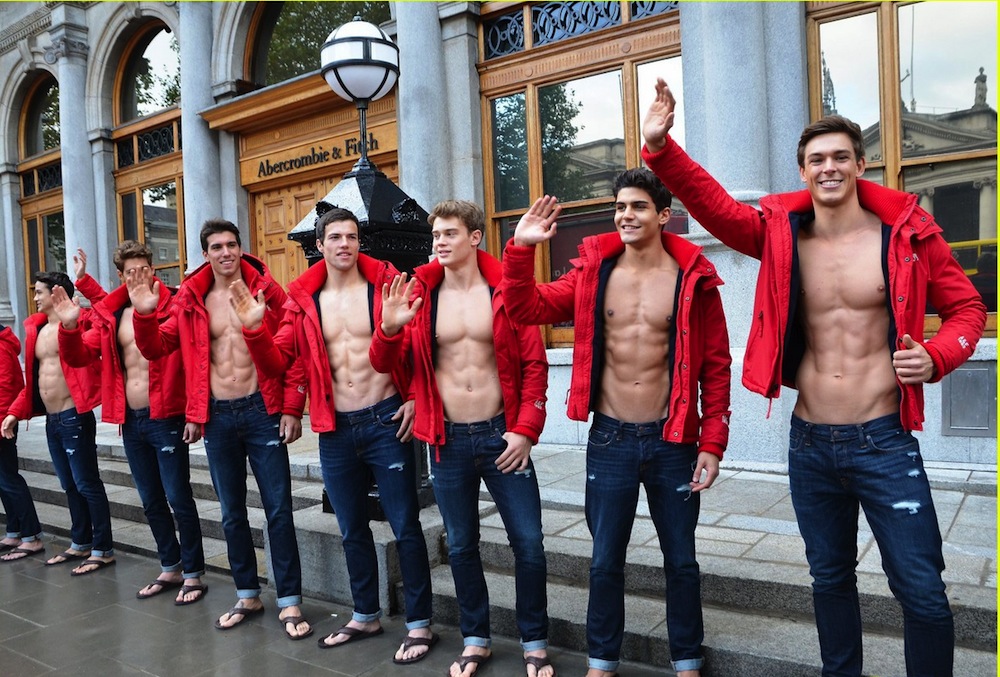The unloved child of fashion: The story of Abercrombie & Fitch
Abercrombie & Fitch is an American ready-to-wear lifestyle retailer focused on casual wear. In the late 90s and early 2000s, everyone know their low-waisted jeans, mini skirts, expensive T-shirts, and stores that resembled a nightclub.

In the late 2000s, the brand fell out of favor. It's not old-fashioned anymore. Netflix's new documentary White Hot: The Rise and Fall of Abercrombie & Fitch also contributed to this situation. The documentary chronicles the rise and fall of this company, whose history is filled with tales of race, body, gender, class, and all kinds of discrimination. The documentary, directed by Alison Klayman, lasts 1 hour and 28 minutes.
100 percent white American
Abercrombie&Fitch, as one of the components of popular culture, played an important role in the perception of body and identity, especially among young people, at a time when social media was not used as widely as it is today. The communication strategy and operation of the brand were structured on the rejection and exclusion of certain segments of society. The vision of CEO Mike Jeffries, whom they appointed in 1992, has a great share in this. Jeffries gave the brand a "sexy" image with ads and catalogs focusing on nude muscular male models as well as nude store employees. Together with photographer Bruce Webber, they created not only an aesthetic but a 100 percent American (that is, the America of whites) lifestyle based on the stereotypes of femininity and masculinity.
As a matter of fact, Jeffries never hid the values that the brand represents. “There are cool and popular kids in every school and some who aren't. We are targeting the cool ones without hiding them”. However, the brand was later accused of discrimination, especially in the hiring process. It turned out that people from different ethnic groups, different lifestyles, or people of color turned down their applications because they were "not pretty enough" or because they didn't comply with the company's "looks" policy. These stories can be heard in interviews about class action lawsuits brought against the brand by former employees.
Rapid change of perceptions
This prototype dominated the entertainment world in the early 2000s, when Abercrombie messaged his consumers, "If you're not white, thin, and rich, you're not cool." Magazines could easily speak their minds about the bodies and images of celebrities. Former CEO Mike Jeffries's use of this discriminatory approach as a marketing tactic was acceptable not so much, nearly 10 years ago. Even if people felt excluded, they could not express it as easily as they do today. The documentary is also interesting in that it reveals how quickly perceptions can change even in such a short time.
Abercrombie & Fitch, realizing that the situation is not good, limited Jeffries' powers by stating that they "put the customer in the center" in 2014. It also changed its policy of employing people based on appearance. Sibling brands Hollister and Abercrombie stopped using nude models for store openings. They began to call salespeople "brand representatives" instead of "models". Abercrombie struggled to achieve a more inclusive brand image. In 2020, it embarked on the Abercrombie Equality Project, which aims for social and racial justice. In summary, they are currently dealing with all sensitive issues related to representation, such as LGBTI+, gender equality, and body affirmation. There are models of different sizes, ages, and skills in their social media posts. They do social responsibility projects with associations working on the mental health of young people of color.
Story
The company was founded in New York in 1892 by David Abercrombie with the aim of producing extreme sports apparel for the upper class. Ezra Fitch, a wealthy lawyer, contractor, and loyal Abercrombie client bought a substantial stake in the business in 1900. He joined the company in 1904 and became "Abercrombie & Fitch Co." was renamed. Fitch eventually bought Abercrombie and was the sole owner from 1907 to 1928. The company was an outstanding manufacturer of sports and leisure products, notable for particularly expensive hunting rifles, fishing rods, fishing boats, and tents. It once outfitted Theodore Roosevelt's safari and Richard Byrd's expedition to Antarctica. Ernest Hemingway was also a regular customer; The gun with which he committed suicide in 1961 was purchased from Abercrombie & Fitch. After Hemingway's death, his wife had several of his guns sold on consignment with the company.
In the 1970s, A&F struggled to compete with lower-priced competitors while trying to maintain its high-end image. It was known for keeping an extensive inventory of products, but high operating expenses forced A&F to divest its higher-priced products such as gold and onyx chess sets for $18,000 (equivalent to $125,599 in 2021). Cash flow problems have also forced the company to reduce its inventory of mid-priced items.
In 1976, Abercrombie & Fitch filed for Chapter 11 bankruptcy protection. In 1977, the company closed its top store on Madison Street and East 45th Street in New York.
While Abercrombie & Fitch ceased operations during its bankruptcy, the brand survived: In 1978, Oshman's Sporting Goods, a Houston-based retail chain, purchased the defunct firm's name and mailing list for $1.5 million (equivalent to $6 million in 2021). Oshman relaunched the company as a mail-order retailer specializing in hunting apparel and innovative products. Retail stores were also opened in Beverly Hills, Dallas, and (in the mid-1980s) New York.
In 1988, Oshman's sold the brand and operations to Columbus, Ohio-based The Limited (the parent company of several retail clothing chains, including Victoria's Secret). Under The Limited (later rebranded itself as L Brands), A&F gradually shifted its focus to young adults, then split as a public company, eventually becoming one of the largest apparel companies in the United States.
It went public in 1996 by entering the American stock market. The firm rose rapidly, increasing its popularity.
It was the subject of one of the most famous bands of its time: LFO's song 'Summer Girls'.
https://www.abercrombie.com/
